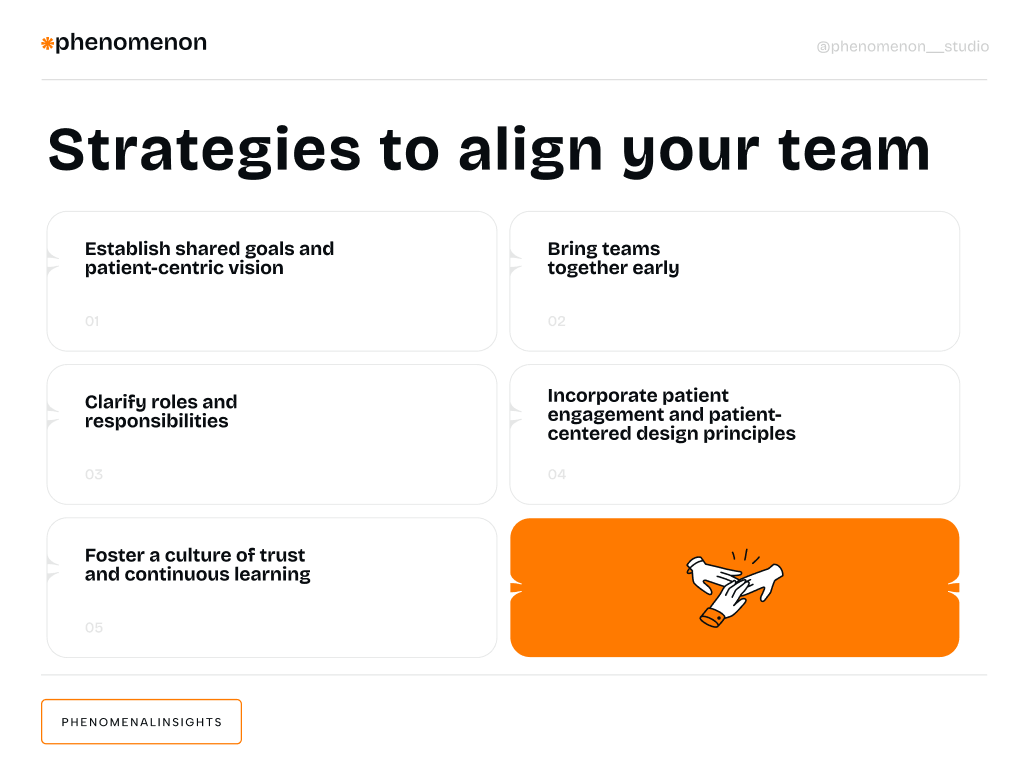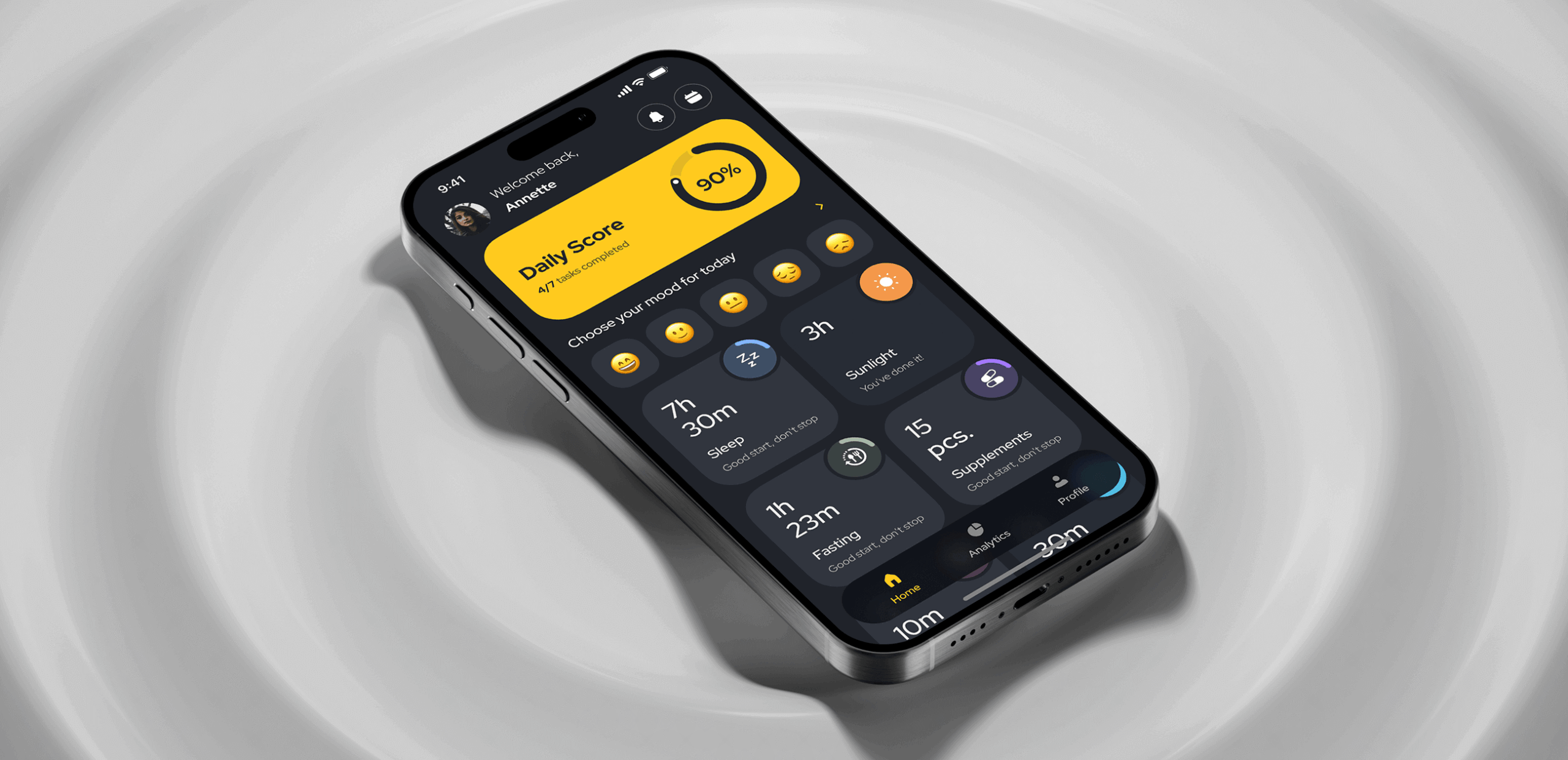Align teams with shared goals and collaboration strategies to build patient engagement systems. Learn how to create innovative healthcare platforms today!
Digital healthcare solutions are rapidly becoming the backbone of modern medicine. From scheduling appointments to providing remote consultations, patient engagement platforms are making a tangible difference in how people access and manage their health. These platforms act as a comprehensive solution by integrating multiple technologies and services—such as telehealth, automated communication, and mobile tools—to streamline care and enhance the patient experience. Both practices and healthcare organizations, as key clients, benefit from these platforms, which offer a wide range of technologies and services designed to improve communication, operational efficiency, and patient outcomes. But creating these user-focused, impactful solutions isn’t without challenges. To bring any successful healthcare product to life, alignment between Product Managers (PMs), Developers (Devs), and Designers is critical.
How do you ensure that these distinct groups, each with their own goals and ways of working, align seamlessly? This guide explores practical strategies to get PMs, Devs, and Designers on the same page, all while keeping the patient at the center of healthcare product development.
Defining Patient Engagement
Patient engagement is the cornerstone of modern healthcare, representing the active involvement of patients in their own care. It’s about more than just providing information—it’s about empowering patients to make informed decisions, collaborate with healthcare professionals, and take charge of their health journey. Patient engagement software and solutions are essential tools in this process, enabling seamless communication, education, and support at every step.
By adopting patient engagement platforms, healthcare organizations can foster stronger connections between patients and care teams, leading to increased patient satisfaction and improved health outcomes. These platforms make it easier for patients to access their health information, ask questions, and participate in their care plans, ultimately enhancing the overall patient experience. As healthcare continues to evolve, prioritizing patient engagement ensures that both patients and healthcare professionals are equipped to achieve the best possible outcomes.
Understanding the Healthcare Journey
The healthcare journey is a complex path that spans from the first appointment to ongoing treatment and follow-up care. Each stage presents unique challenges and opportunities for patients and care teams alike. Patient engagement solutions are designed to support patients throughout this journey, offering accessible resources, personalized tools, and timely information that help patients navigate their care with confidence.
By understanding the intricacies of the healthcare journey, healthcare organizations can develop comprehensive engagement strategies that address the specific needs and preferences of their patients. An integrated approach—where engagement solutions are woven into every touchpoint—enables care teams to deliver exceptional patient experiences. This not only leads to better outcomes but also increases patient satisfaction, as patients feel supported and informed at every stage of their healthcare experience.
Why Alignment Matters in Healthcare Product Development
Patient engagement platforms and digital tools aren’t just about introducing technology; they’re about improving patient outcomes. When teams align on a shared vision focused on the patient experience, extraordinary things happen. Key factors for successful alignment in healthcare product development include clear communication, shared goals, and a focus on both providers and the organization as a whole. Does this alignment require effort? Absolutely. But the benefits are worth it:
- Better Patient Experience
Aligned teams have the ability to produce intuitive, user-friendly tools that empower patients and reduce their cognitive load.
- Operating Efficiency
When everyone communicates effectively, fewer bottlenecks occur. Early involvement avoids costly redesigns or mismatched expectations, benefiting the organization at every level.
- Innovation Boost
Cross-functional collaboration, including input from providers, fuels creativity and leads to ground-breaking ideas in patient-focused care.
Alignment is essential for delivering an exceptional patient experience.
Now that you know the benefits, let’s discuss the strategies that can resolve misalignments and build a collaborative foundation.
Strategies to Align PMs, Designers, and Devs

1. Establish Shared Goals and Patient-Centric Vision
Begin with building and communicating a shared understanding of both business objectives and what the patient truly needs.
- Define the Problem Together
Start by asking questions like, “What specific patient problem are we solving?” and “How will our platform benefit them?” This helps ensure every team understands the product’s purpose. For example, the platform should focus on attracting and onboarding new patients, supporting the person before, during, and after a visit, and delivering tailored care and information. It should enable sending messages and personalized message content to patients through digital channels, including patient portals, which offer more efficient engagement compared to traditional phone calls. The platform should also utilize voice features for communication, manage and use patient data securely, and integrate with EHR vendors to support seamless workflows. The goals include improving outcomes, increasing patient satisfaction, and benefiting both patients and customers such as pharmacies, as well as supporting broader health systems.
- Create a Vision Statement
A patient-centric vision ties everyone’s work back to a shared goal. For example, “Our goal is to create a simple, accessible app that helps patients manage chronic illnesses with minimal effort.”
2. Bring Teams Together Early
Collaboration from the start ensures PMs, Devs, and Designers align on objectives right away.
- Run Discovery Sessions
Invite Devs and Designers to roadmap and feature discovery meetings. Developers offer technical feasibility insights, while designers contribute user-experience expertise.
- Cross-Functional Workshops
Set up workshops to identify risks, brainstorm opportunities, or align design ideas with technical requirements. Working with a single vendor in these workshops can further unify collaboration and streamline tool integration across teams.
- Regular Sync Meetings
Implement frameworks such as daily standups or bi-weekly check-ins. These are helpful forums to quickly reconnect on progress, surface blockers, and recalibrate priorities.
3. Clarify Roles and Responsibilities
When accountability is murky, tasks fall through the cracks. Defining clear roles gives teams ownership and clarity, fostering smoother collaboration.
- Use a RACI Matrix
Define who is Responsible, Accountable, Consulted, and Informed for each deliverable. PMs may own product goals, Designers control branding choices, while Devs determine feasibility.
- Visual Documentation
Mapping out workflows or assigning specialists for technical and aesthetic aspects helps team members understand their “lane” while appreciating how they contribute to the whole product.
4. Incorporate Patient Engagement and Patient-Centered Design Principles
The backbone of patient engagement systems should be a design built with empathy, trust, and inclusion. The value of this cannot be overstated given the diverse demographics of healthcare users.
- Design for Inclusivity
Whether a user is proficient with technology or unfamiliar with how apps function, your platform should adapt to a wide range of needs. Leverage technologies that support accessibility, such as screen readers and voice commands, to ensure that text is readable and interfaces are navigable for those with visual or physical impairments.
- Transparent Communication
Patients engage more with tools they trust. Ensure your app clearly and securely communicates with patients about how their data is used and provides resourceful guidance.
- Simplify Interactions
Healthcare can be overwhelming; your app shouldn’t be. For example, replace jargon-heavy alerts like “Hypertension Management Alert” with a simpler “Time to take your medication.”
Continuously iterate by gathering real patient feedback during prototype testing to refine the user flow.
5. Foster a Culture of Trust and Continuous Learning
Siloed environments or fear of critique will jeopardize product development. Making collaboration safe and rewarding breaks through these barriers.
- Encourage Openness
When Devs feel involved in design critiques or PMs feel heard without sparking designer defensiveness, it encourages a cycle of shared ownership. Create psychological safety to share ideas freely.
- Rely on Data
Push for debates and validation based on research, not opinions. Data-backed discussions improve decision-making, whether it’s feature prioritization or user feedback interpretation. Use shared dashboards to keep everyone informed.
- Celebrate Wins Together
When tasks lead to patient success metrics, like improved feedback or higher engagement, celebrate as a team. Recognizing collective wins reinforces collaboration and motivates consistent teamwork.
Using Case Studies to Inform Patient Engagement Strategies
Real-world case studies are invaluable for healthcare organizations seeking to enhance their patient engagement strategies. By examining successful implementations of patient engagement software and platforms, organizations can uncover best practices, identify common challenges, and discover new opportunities to improve care delivery. These insights help healthcare professionals develop targeted interventions that expand the reach and effectiveness of their engagement initiatives.
A strong example of such implementation is the Zest app — a platform that empowers users to take charge of their long-term health by translating complex scientific data into simple, actionable insights. Designed to address the root causes of aging, Zest integrates evidence from over 100 clinical studies and delivers personalized supplement recommendations based on functional age. We helped bring this vision to life by crafting a user-centered experience that combines mood tracking, health assessments, and dynamic progress monitoring. The app not only makes longevity science accessible but also fosters daily engagement through an intuitive interface and clear feedback loops. By launching an MVP in just one month, Zest accelerated time-to-market and began generating revenue ahead of schedule, all while keeping development costs lean. The project demonstrates how thoughtful design and strategic focus on user needs can turn advanced medical research into an engaging wellness journey—enhancing user participation and long-term adherence.

Case studies like Zest also highlight the tangible benefits of patient engagement, such as improved patient outcomes, greater efficiency, and a reduced administrative burden for care teams. By learning from the experiences of others, healthcare organizations can create more responsive and personalized engagement strategies that truly meet the needs of their patients and specific populations. Leveraging these lessons ensures that patient engagement remains at the forefront of healthcare innovation, driving better outcomes for all.
Putting It All Together
Developing healthcare solutions isn’t just about creating a tool; it’s about empowering better patient outcomes. Maintaining a strong connection between teams and patients is essential for success. The goal is to engage patients throughout the process, ensuring they are active participants in their care. Practices benefit from these strategies by streamlining workflows and adapting to change, ultimately enhancing patient engagement and outcomes. To align PMs, Devs, and Designers around these goals, you need shared vision, transparent communication pathways, and a culture of patient-focused iteration.
At Phenomenon Studio, we’re no stranger to building seamless patient engagement platforms focused on usability and outcomes. Our purpose is to guide teams from siloed confusion to confident, patient-focused collaboration.
If driving successful alignment and bringing value-driven products to life sounds like your focus, reach out to us today. Partner with our team in delivering better solutions and improving patient care together.













